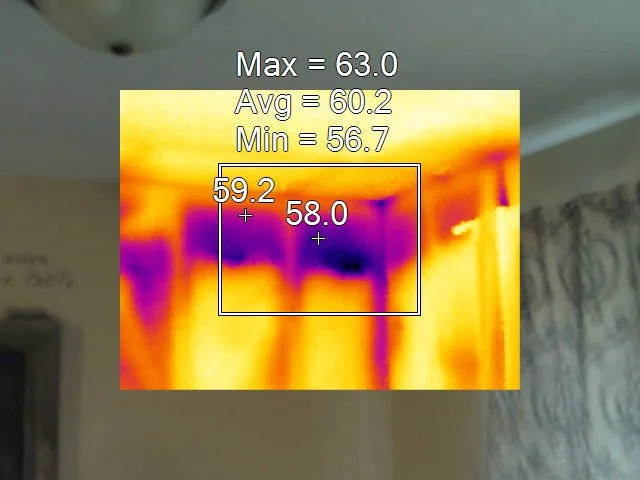
For Homeowners
Targeted Troubleshooting
Do you need help solving a specific issue with your home?
Our energy audits can focus on individual problems such as odd smells from ductwork, ghosting patterns on a ceiling or wall, condensation, ice dams, and health issues related to quality of air, humidity, moisture, or mold.
We investigate thermal barriers, air barriers, and vapor barriers and suggest corrective actions for a healthier home.
Common Home Energy, Comfort, and Health Problems
High Utility Bills
High utility bills for heating in the winter and cooling in summer can often be traced to air leaks (air infiltration), wasting up to 30% of your home’s energy. There are several items to be checked to limit the escaping energy (see Common Air Leaks below).
Drafty Areas or Rooms and Cold Winter Floors
Cold air flowing through your house can be caused by air leaks in many places, including the basement, crawlspace, drain pipe chases, or around windows causing rooms to feel drafty and uncomfortable. Lack of insulation in walls, at the end of floor joints and under sill plates can cause cold floors and walls.
Hot or Cold Rooms
Differences in room temperatures are caused by inadequate insulation, air leakage, poor duct performance, and improperly installed heating, ventilation, and air conditioning (HVAC) systems. Sealed and insulated ducts can decrease heating and cooling costs as much as 20 percent.
Frost or Fog on Windows
Air leaks around windows or high indoor moisture levels from other air leaks can cause condensation, frost, or pools of water on windows and sills.
Dry Indoor Air in Winter
Air leaks in your home allow warm humid air to escape and draw in drier, colder air.
Icicles and Ice Dams
Without good attic insulation, warm air inside your home leaks into the attic and warms the underside of the roof, causing snow and ice to melt and then refreeze as it runs off your roof — forming icicles and ice dams. Leaks from these formations can drain back into the house, causing damage.
Mold, Mildew, or Musty Odors
Mold and mildew caused by water leaks, high humidity, and damp basements lead to wood rot, structural damage, peeling paint, and a variety of health problems. Mold destroys a home’s value and can be very expensive to remediate. A damp basement caused by moisture migrating through the foundation increases indoor humidity and can promote the growth of mold — resulting in unsafe living conditions. A properly sealed and insulated home resists mold because moist air doesn’t infiltrate. Closed cell insulation retards moisture because the cells are tightly packed together.
Brick Cracking or Chipping and Paint Peeling
Bricks breaking or cracking and exterior paint peeling can be an indication of moisture and humidity problems.















